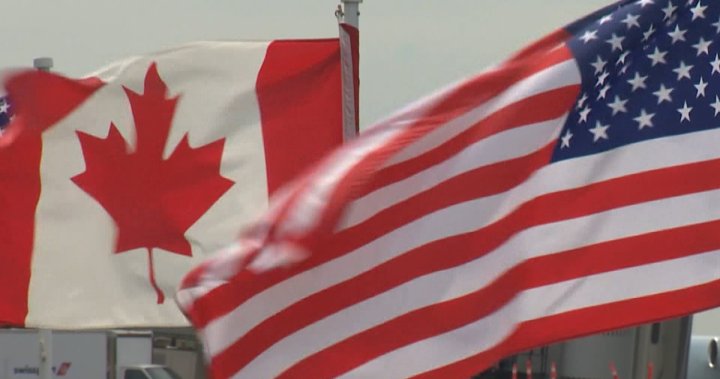Canada
U.S. tariffs on Canada still coming Tuesday, but it may not be 25%: Lutnick

U.S. Tariffs on Canada and Mexico: A Fluid Situation with Uncertain Outcomes
The U.S. government has confirmed that tariffs on Canada and Mexico will take effect on March 4, though the exact rates remain uncertain. Howard Lutnick, U.S. Commerce Secretary, stated in an interview with Fox News that while the tariffs are set to begin on the announced date, the final details, including the percentage, will be determined by President Donald Trump and his administration. This suggests that the previously proposed 25% tariffs may be adjusted or implemented in a more nuanced manner. Lutnick emphasized that the tariffs are directly linked to issues surrounding the U.S.-Mexico and U.S.-Canada borders, particularly the flow of fentanyl and migrants into the United States.
Despite the tariffs being framed as a response to these challenges, Lutnick acknowledged that both Canada and Mexico have made significant efforts to secure their borders. He noted that while fentanyl continues to be a critical issue, the two countries have been "working hard on the border" and have achieved some success in addressing these problems. This acknowledgment adds a layer of complexity to the situation, as it suggests that the tariffs may not be solely punitive but could also serve as a negotiating tool to encourage further cooperation.
The Fentanyl Crisis and Its Impact on U.S.-Canada Relations
The fentanyl crisis has been a central justification for the tariffs, with President Trump repeatedly linking the issue to the need for stricter border measures. However, data from both Canadian and U.S. sources indicates that the role of Canada in the fentanyl trade is relatively minor. According to Canadian federal data, less than 1% of the fentanyl entering the U.S. originates from Canada. Furthermore, U.S. Customs and Border Protection reported that fentanyl seizures at the Canada-U.S. border dropped to their lowest levels since 2023 in January, with only 14 grams seized that month. Over the last fiscal year, just over 19 kilograms of fentanyl from Canada were intercepted.
Canadian Prime Minister Justin Trudeau and his government have highlighted these successes, pointing to a 90% reduction in fentanyl seizures over the past month. This progress was even noted in a White House readout of a recent call between Trump and Trudeau. However, Trump has publicly contradicted this narrative, stating during a meeting with British Prime Minister Keir Starmer that Canada has made "no progress at all" in stopping fentanyl. This discrepancy raises questions about the accuracy of Trump’s claims and whether the tariffs are being used as a political tool rather than a response to verifiable data.
Broader Trade Implications: China and Canadian Lumber
The tariffs on Canada and Mexico are not the only trade measures being taken by the Trump administration. The president is also expected to increase tariffs on China from 10% to 20%, with Lutnick stating that this move is contingent on China’s efforts to curb fentanyl trafficking into the U.S. This escalation highlights the administration’s broader strategy of using tariffs as a means of addressing non-trade-related issues, such as drug trafficking and immigration.
Additionally, Trump has directed Lutnick to investigate the possibility of imposing further tariffs on Canadian lumber, which would add to existing duties on softwood lumber. This move could exacerbate tensions with Canada, particularly if it is seen as an unjustified escalation of trade restrictions. The combination of these measures—tariffs on Mexico, Canada, and China—suggests a multifaceted approach to addressing the fentanyl crisis and border security, with significant implications for global trade.
The Economic and Political Fallout
The tariffs on Canada, Mexico, and China have the potential to cause widespread economic disruption, particularly for industries that rely heavily on cross-border trade. For example, the additional tariffs on Canadian lumber could impact the U.S. housing market, while increased tariffs on China could lead to higher prices for a wide range of consumer goods. These measures also risk triggering retaliatory actions from affected countries, potentially leading to a broader trade war.
Politically, the tariffs have created tension between the U.S. and its neighbors. Canadian officials have expressed frustration at the tariffs, particularly given the data showing minimal fentanyl flows from Canada. Similarly, Mexico has pushed back against the measures, arguing that they are unfair and counterproductive. The tariffs have also drawn criticism from U.S. business groups and lawmakers, who argue that they will harm American consumers and businesses while failing to address the root causes of the fentanyl crisis.
A Human Perspective: The Impact on People and Communities
Beyond the political and economic implications, the tariffs and the broader policies they represent have real-world consequences for people on both sides of the border. For example, communities that rely on cross-border trade may face job losses and economic hardship as a result of the tariffs. Additionally, the fentanyl crisis itself has devast